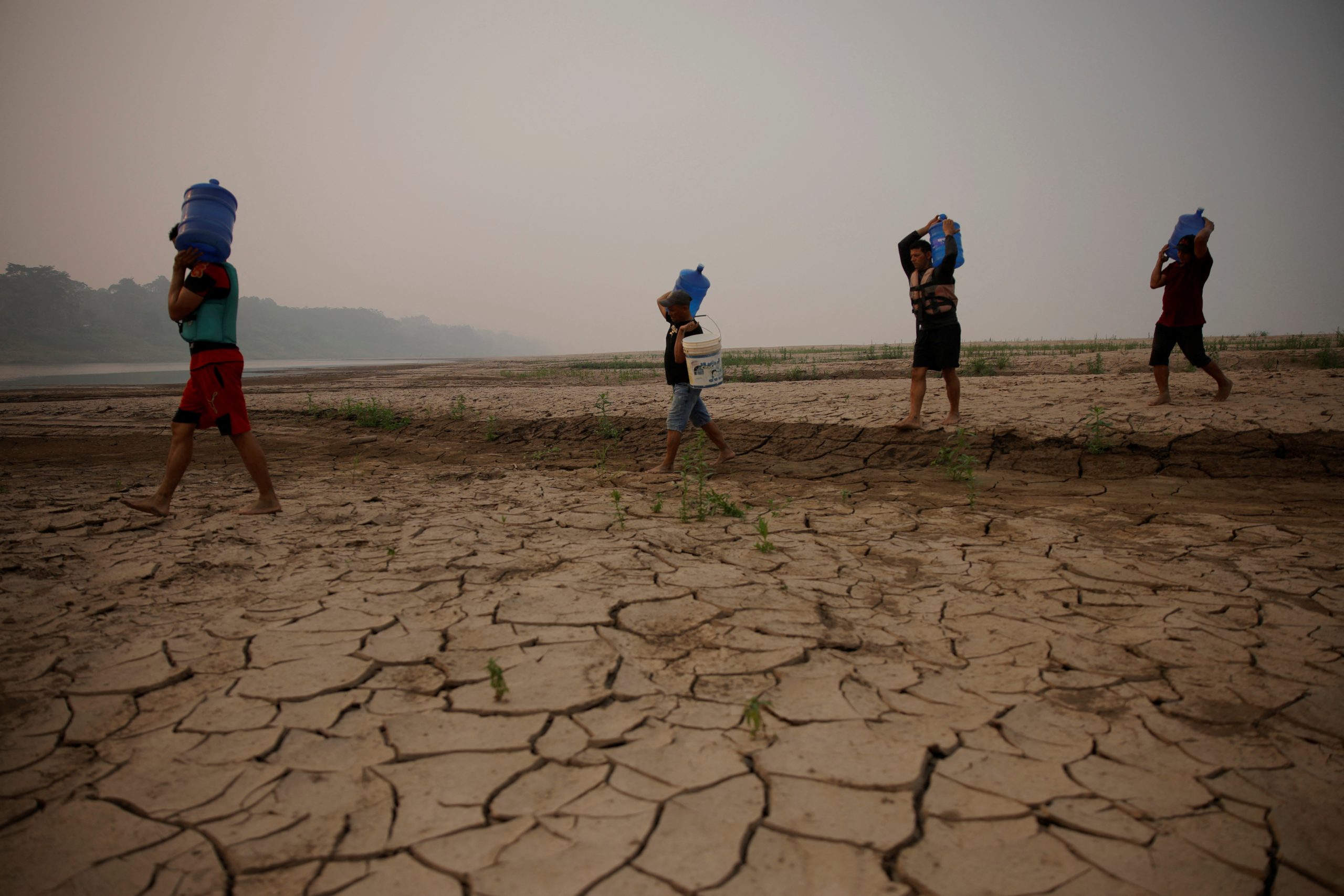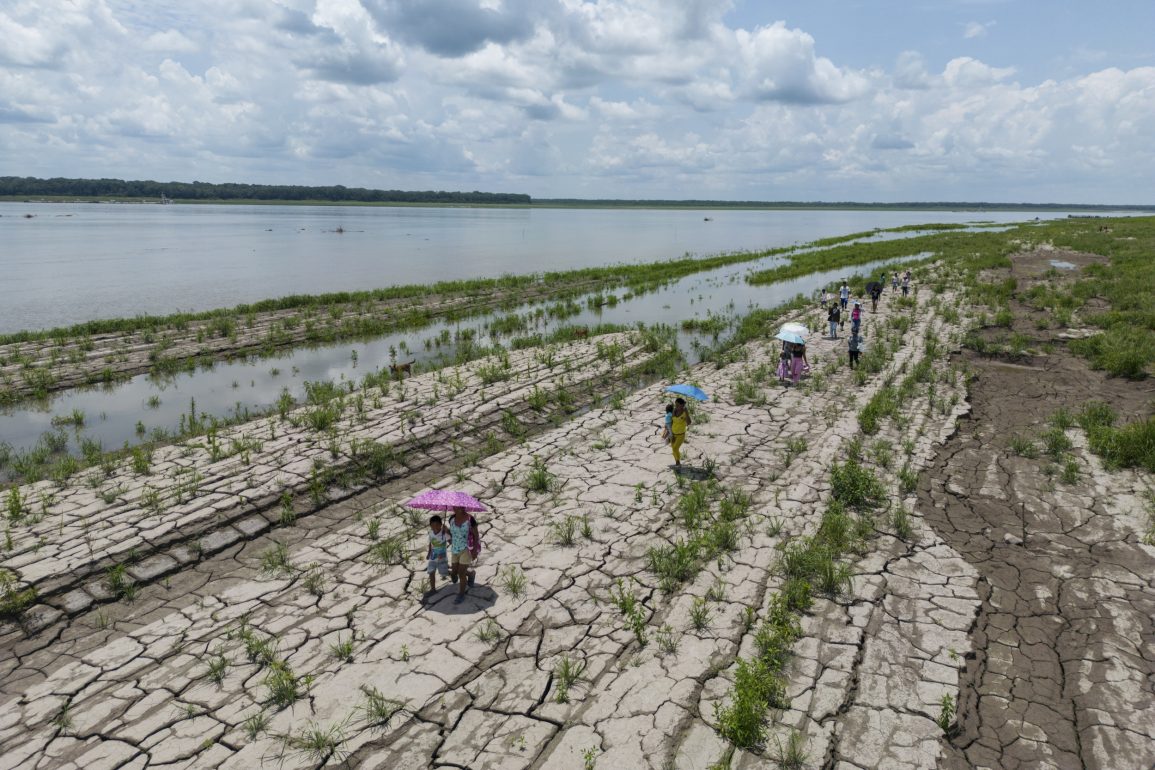Marciano Flores, a 69-year-old fisherman from the Cocama Indigenous community, finds himself knee-deep in the Amazon River, facing the harsh reality of historically low water levels. With decades of experience on the river, Flores usually knows where to find the best fishing spots.
However, due to the severe drought, he has been catching fewer fish, forcing him and his crew to travel farther each day, which significantly increases their fuel costs. Flores is worried that the low water levels are causing fish deaths, leading to empty nets and a diminishing livelihood for him and his fellow fishermen.
The Amazon River, which typically experiences seasonal fluctuations, has seen a dramatic decline in water levels, particularly in Brazil. This phenomenon is now spreading to neighboring countries like Colombia, resulting in widespread disruptions to local economies and food security.
Many rural Indigenous communities rely heavily on the river for their livelihoods and are facing isolation as the riverbed dries up. Nonprofit organizations and government agencies have begun delivering essential food and water supplies, but many residents still struggle to access these resources, often requiring long and arduous walks to reach them.

Indigenous communities are among the most affected by the drought. Álvaro Sarmiento, head of operations for the Colombian Civil Defense, has expressed deep concern about food shortages, emphasizing that fishing is a crucial source of sustenance for these populations.
Reports indicate that water levels in the Amazon have decreased by as much as 80% to 90%, severely impacting the ability of these communities to obtain food and water. The visual evidence of the drought is stark, with cracked earth and high water marks on trees revealing the alarming drop in water levels.
In the community of La Playa, located near Leticia, residents are grappling with severe water scarcity. Ermencida Miranda, who operates a small store, shared her frustrations about the lack of rain and the reliance on rainwater for cooking and drinking.
In the nearby Santa Sofia Indigenous reserve, which comprises five different groups, locals waited for essential supplies from a nonprofit. The drought has complicated transportation, making it increasingly difficult for them to sell their crops and access food.
In response to the crisis, Colombia’s National Unit for Disaster Risk Management has announced plans to provide motorized pumps and explore underground water sources, while Peru has declared a state of emergency to assist affected communities.
Although water levels have seen slight improvements in some areas, the threat of continued drought looms large. For residents like Miranda, the hope for more substantial government support in securing water supplies highlights an urgent need for effective solutions to combat the ongoing challenges posed by the drought. Access to water remains a critical issue for the survival and well-being of these communities.

